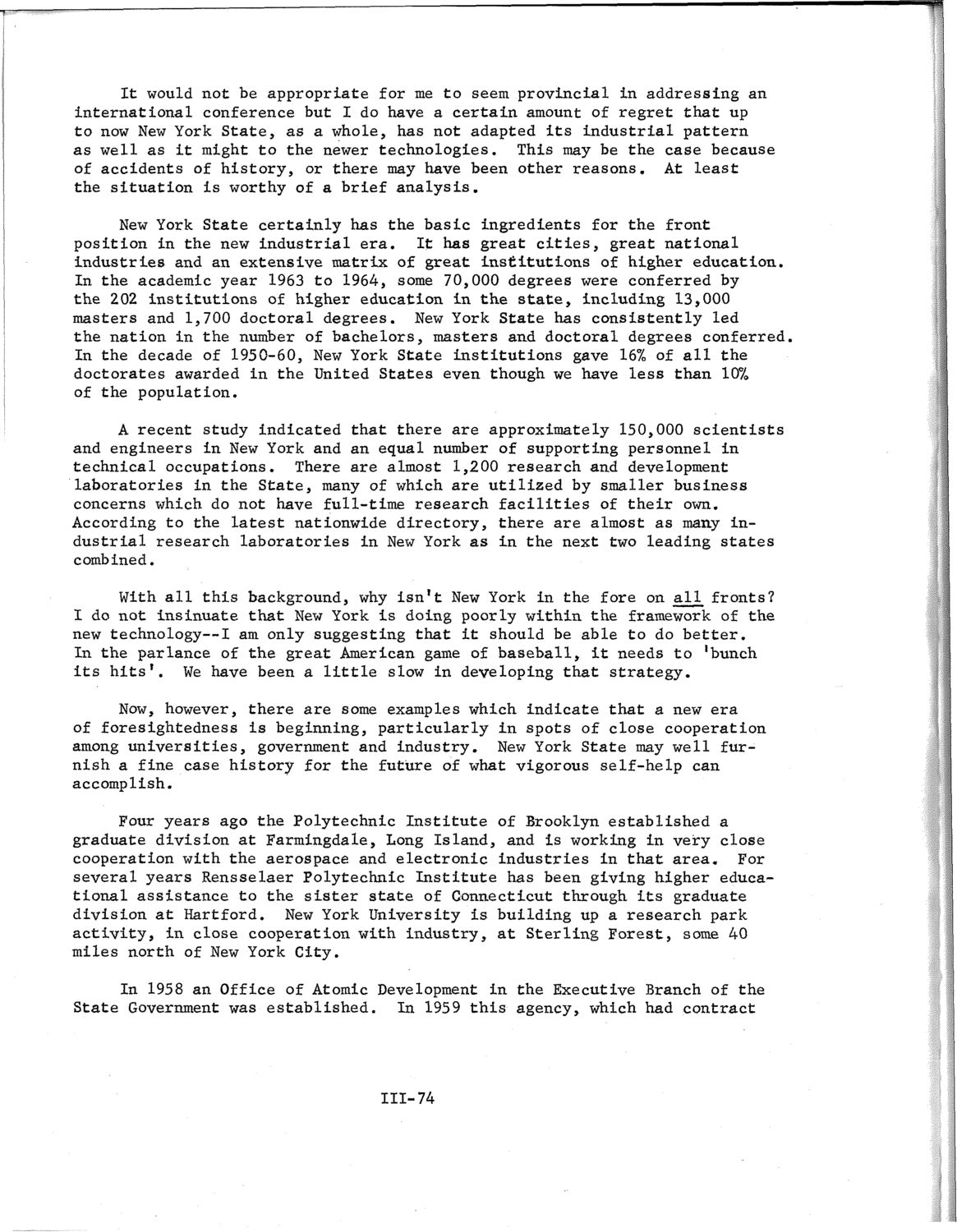| |
| |
Caption: SWE - Proceedings of the First International Conference of Women Engineers and Scientists
This is a reduced-resolution page image for fast online browsing.

EXTRACTED TEXT FROM PAGE:
It would not be appropriate for me to seem provincial in addressing an international conference but I do have a certain amount of regret that up to now New York State, as a whole, has not adapted its industrial pattern as well as it might to the newer technologies. This may be the case because of accidents of history, or there may have been other reasons. At least the situation is worthy of a brief analysis. New York State certainly has the basic ingredients for the front position in the new industrial era. It has great cities, great national industries and an extensive matrix of great institutions of higher education. In the academic year 1963 to 1964, some 70,000 degrees were conferred by the 202 institutions of higher education in the state, including 13,000 masters and 1,700 doctoral degrees. New York State has consistently led the nation in the number of bachelors, masters and doctoral degrees conferred. In the decade of 1950-60, New York State institutions gave 16% of all the doctorates awarded in the United States even though we have less than 10% of the population. A recent study indicated that there are approximately 150,000 scientists and engineers in New York and an equal number of supporting personnel in technical occupations. There are almost 1,200 research and development laboratories in the State, many of which are utilized by smaller business concerns which do not have full-time research facilities of their own. According to the latest nationwide directory, there are almost as many industrial research laboratories In New York as in the next two leading states combined. With all this background, why isn't New York in the fore on all fronts? I do not insinuate that New York is doing poorly within the framework of the new technology—I am only suggesting that it should be able to do better. In the parlance of the great American game of baseball, it needs to 'bunch its hits'. We have been a little slow in developing that strategy. Now, however, there are some examples which indicate that a new era of foresightedness is beginning, particularly in spots of close cooperation among universities, government and industry. New York State may well furnish a fine case history for the future of what vigorous self-help can accomplish. Four years ago the Polytechnic Institute of Brooklyn established a graduate division at Farmingdale, Long Island, and is working in very close cooperation with the aerospace and electronic industries in that area. For several years Rensselaer Polytechnic Institute has been giving higher educational assistance to the sister state of Connecticut through Its graduate division at Hartford. New York University is building up a research park activity, in close cooperation with industry, at Sterling Forest, some 40 miles north of New York City. In 1958 an Office of Atomic Development In the Executive Branch of the State Government was established. In 1959 this agency, which had contract III-74
| |